We got a bulk of stepper motors, you can see specs on the following image:
I'm doing some work on my school laboratory, and they want me to test this motors to see which ones work and which ones doesn't. As of now, I have used a Arduino micro and an Easy Driver(Allegro A3967), just STP and DIR signals, after 10 motors, the driver died, I found a short between A- signal and V+.
Reading the complete datasheet I have now realized that we are not suppose to "hot swap" the motors, we have to turn off the unit and swap, but that is slow and does not work for me, so now I connected a Relay to an arduino output (Darlington Driver), that Relay turns ON and OFF the easy driver board, (Opening and closing V+ Line), after 60 motors, again the driver died, again short from 1 output terminal to V+.
My next move is to put some schotky diodes to clip transient voltages on the A+, A-, B+ and B- terminals and see how the board responds.
My question is: Do you have any idea how to make a Hot swappable driver for a stepper motor?, Do you know any IC that can do that? Do I have any more options? is this really possible?

